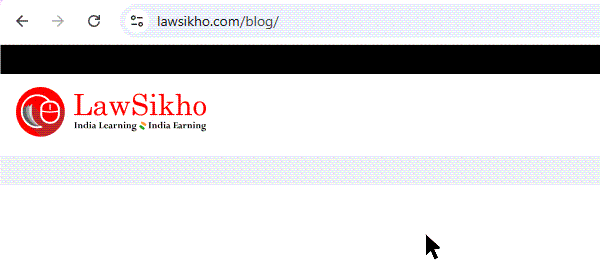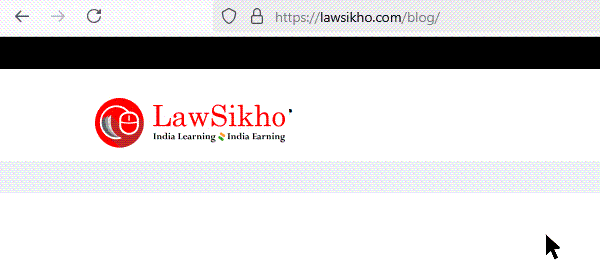Learn how to automate compliance verification and final board report drafting using AI under Section 134 of the Companies Act. This step-by-step guide covers Group 6 disclosures—subsidiary reporting, IBC details, and regulatory status—while transforming legal compliance tasks into governance excellence with tools like Claude or ChatGPT.
Table of Contents
Introduction
The phone rang at 4:30 PM on a Thursday. Ms. Rao glanced at the caller ID— Mr. Amit Verma. The Company Secretary of Nova AgriTech was calling for a progress update.
“Ms. Rao, how are we progressing with the board report? The board meeting is next week, and I want to ensure everything is on track.”
“Excellent timing, Mr. Verma,” Ms. Rao replied, reviewing their systematic progress.
“We have completed all the major sections—your governance disclosures showcase the board’s strategic oversight, the financial performance section positions your 42% growth impressively, directors’ responsibility statements are legally sound, and we have addressed all auditor and stakeholder communications professionally.”
“That sounds comprehensive. What is left?”
“Just the final legal compliance verification—subsidiary reporting, regulatory status confirmations, and cross-checking all our numbers for consistency. It is the most detail-oriented part, but it is what separates professional board reports from basic compliance exercises.”
“Perfect. When can we expect the final draft?”
“We will have everything ready by Friday afternoon, well ahead of your board meeting. Our systematic approach ensures both quality and timely delivery.”
“Excellent. I appreciate the thorough updates, Ms. Rao.”
Series overview: Using AI to draft board reports under section 134
This is Part 7 of our 8-part series on using AI to draft board reports under the Companies Act 2013.
Complete series overview:
- Part 1: Getting Started
- Part 2: Building the foundation (Group 1)
- Part 3: Financial performance and capital management (Group 2)
- Part 4: Directors’ statements and professional judgment (Group 3)
- Part 5: External stakeholders and audit relations (Group 4)
- Part 6: Risk management and CSR disclosures (Group 5)
- Part 7: Final assembly and compliance verification (Group 6) ← You are here
- Part 8: Live demonstration – complete board report
Haven’t started from Part 1? No problem! This article works standalone, but you will get more value by reading the series sequentially.
What you will learn in this Article: Arjun and Ms. Rao tackle the most meticulous aspect of board reports – transforming regulatory and legal compliance into evidence of governance excellence. You will see how they verify every legal requirement while maintaining professional coherence.
Key Characters:
- Arjun Sharma: Junior lawyer mastering systematic AI collaboration
- Ms. Priya Rao: Senior partner, now confident in comprehensive AI applications
- Nova AgriTech: Their client needing flawless final compliance verification
Quick recap: Where we are
[For series readers: Skip to “Today’s Focus” below]
[For new readers: Here is what happened so far]
The journey so far: Ms. Rao started skeptical about AI for legal work. Through Parts 1-6, Arjun demonstrated systematic AI collaboration that produced investment-grade content. They have successfully completed governance foundations. Financial storytelling. Directors’ statements. External stakeholder communications. Risk management disclosures. Each group built logically while maintaining professional excellence.
The systematic approach we have developed:
- Document-based context (upload comprehensive company info)
- Strategic analysis (test Claude’s understanding)
- Progressive refinement (improve drafts through focused prompts)
- Human oversight (lawyer review and validation)
Groups completed so far:
- Group 1: Company identity and governance
- Group 2: Financial performance and highlights
- Group 3: Directors’ statements and professional judgment
- Group 4: External stakeholders and audit relations
- Group 5: Risk management and CSR disclosures
- Group 6: Legal compliance reporting ← Today’s focus
Nova AgriTech Quick Profile: Agri-tech company with a strong governance foundation established. Investment-grade financial performance is documented comprehensively. Professional risk and CSR positioning are completed strategically.
Today’s focus: Group 6
In this article, watch Arjun and Ms. Rao handle regulatory compliance, legal proceedings, and subsidiary performance reporting.
Areas where perfect accuracy matters more than creative positioning.
Group 6 requirements we are covering:
- Rule 8(5)(viii): Significant regulatory/court orders
- Rule 8(5)(i): Subsidiary performance reporting
- Rule 8(5)(xi): IBC applications/proceedings details
- Rule 8(5)(xii): One-time settlement valuation differences
- Rule 8(5)(xiii) Maternity Benefits Act compliance declaration
- Final compliance verification across all groups
By the end, you will understand:
- How to transform “nothing to report” disclosures into governance strengths
- Techniques for systematic cross-reference verification
- Ways to maintain strategic coherence across legal and regulatory requirements
The Legal compliance challenge
“Five groups down, one to go.”
After ending the call with Mr. Verma, Ms. Rao turned back to Arjun. The conference room at Khanna Legal Solutions was filled with their organised work from the day’s systematic progress through Groups 1-5.
But Arjun noticed thoughtful concentration in her posture.
“Alright, let’s just wrap up with Group 6. There’s nothing that Claude cannot handle,” Ms. Rao said confidently.
She pointed to the requirements: “Look at these—significant regulatory orders, subsidiary performance reporting, IBC application details, one-time settlement disclosures, maternity benefits compliance.”
“Most will be ‘nothing to report’ statements, but they need to sound professional and demonstrate governance excellence,” she explained.
Arjun nodded. “Let us see how Claude handles the legal and regulatory precision requirements.”
Understanding the legal and regulatory compliance
“Now we shift to pure verification mode,” Ms. Rao explained, organising the compliance files methodically.
“The previous groups told Nova’s story strategically. Group 6 confirms every detail is bulletproof for regulatory scrutiny.”
She opened Nova’s regulatory history.
“Most firms treat this as clerical work—something to rush through after the important writing is done. That is a mistake.”
Creating the legal compliance context document
“We need different information for Group 6,” Arjun said, opening a fresh document.
“For Group 6, Claude needs their regulatory compliance history and legal track record.”
Ms. Rao leaned forward with interest.
“What do you mean specifically?”
“Claude needs to know whether Nova has had any regulatory problems, how their subsidiary is performing, and that all the numbers match up across different sections,” Arjun explained.
“We are verifying facts now, not impressing investors.”
He began creating Nova’s legal compliance document:
Nova AgriTech Legal Compliance Document – Group 6
Regulatory compliance status:
- Clean regulatory record: No significant orders during FY 2024-25
- MCA compliance: All annual filings submitted on time
- Tax compliance: No pending assessments or disputes
- Environmental clearances: All IoT operations are properly permitted
- Strategic positioning: Compliance excellence as a competitive advantage
Subsidiary performance data – Nova AgriTech Solutions Pvt Ltd:
- Incorporation: October 15, 2024
- Paid-up capital: ₹50 lakhs
- Business operations: Field services and customer support
- Revenue (Oct 2024-Mar 2025): ₹1.2 crores
- Operational team: 12 field engineers, 3 customer support staff
- Strategic role: Market penetration enabler for parent company
Additional compliance status:
- IBC applications: No applications filed under the Insolvency and Bankruptcy Code, 2016 during FY 2024-25
- One-time settlements: No settlements with banks/financial institutions during the year
- Banking relationships: Strong relationships with Banks maintained
- Financial stability: Debt-to-equity ratio improved from 0.3 to 0.15
Maternity benefits compliance:
- Policy implementation: A Comprehensive maternity benefits policy was established
- Employee coverage: All female employees are covered under the Maternity Benefit Act, 1961
- Leave utilisation: 3 employees availed maternity benefits during FY 2024-25
- Compliance status: Full compliance with 26-week leave provisions and benefit payments
Cross-reference critical data points:
- Board meetings: 7 meetings (must align across all group references)
- Financial figures: ₹45.2 crores revenue, ₹8.7 crores profit (consistency required)
- Director appointments: Dr. Priya Sharma (July 2024), Mr. Rajesh Kumar (September 2024)
- Key dates: Subsidiary incorporation, major contract signing, dividend declaration
Administrative precision requirements:
- Regulatory disclosure: Professional “clean record” positioning
- Subsidiary reporting: Integration with parent company strategic narrative
- Compliance verification: Systematic checking of all legal requirements
- Documentation standards: Administrative sections maintain overall document quality
Ms. Rao reviewed the comprehensive context document.
“This gives Claude exactly what it needs for Group 6’s legal precision while maintaining our strategic positioning.”
“Right,” Arjun explained, “Claude understands we are not just checking compliance boxes.”
Every ‘no issues’ disclosure becomes an opportunity to demonstrate governance excellence.
Testing Claude’s understanding of legal compliance
“So we are going to repeat the first step, which would be to upload the document first and see Claude’s understanding,” Arjun said.
First prompt:
“Based on the Nova AgriTech’s document uploaded, analyze the communication strategy the company must adopt while reporting it in the board report.
Focus on:
(1) How legal precision differs from strategic positioning
(2) Why subsidiary reporting requires integration with the parent company’s narrative
(3) How compliance verification demonstrates governance excellence rather than just meeting requirements
(4) The cross-referencing challenges to ensure consistency across all previous groups.”
Claude’s response (click here to see) demonstrated a sophisticated understanding of the fundamental shift.
Administrative precision over strategic narrative.
The Claude recognised that Group 6 represented “a sophisticated approach that balances legal precision with strategic positioning.”
Turning facts into strategy: Instead of just stating facts like “No cases filed under the Insolvency and Bankruptcy Code,” Claude understood the value of presenting them as strengths, positioning Nova’s clean record as proof of strong compliance and a competitive edge.
Subsidiary reporting as part of the bigger picture: Claude saw that Nova AgriTech Solutions’ ₹1.2 crores in revenue shouldn’t be shown in isolation. Instead, it should support a broader growth story, showing how subsidiaries drive the parent company’s expansion.
Highlighting governance as a strength: Rather than defensively stating “No major regulatory orders,” Claude recommended a more confident tone like: “Maintained a spotless regulatory track record in FY 2024-25, boosting stakeholder trust.”
Cross-referencing accuracy requirements: Claude identified the critical consistency framework—7 board meetings, ₹45.2 crores revenue, director appointment dates—and recommended a master data validation approach with systematic numerical verification.
The final implementation: Complete group 6 disclosure drafting
“Claude’s analysis is solid,” Ms. Rao concluded.
“Now we need disclosure language that meets all these precision requirements simultaneously.”
Second prompt:
“Based on your strategic analysis, now draft the complete Group 6 disclosures for Nova AgriTech’s FY 2024-25 board report in final board report format.
Structure as:
(1) Rule 8(5)(8) – Significant regulatory/court orders (demonstrate clean compliance record as governance excellence)
(2) Rule 8(1) – Subsidiary performance reporting for Nova AgriTech Solutions Pvt Ltd (integrate within parent company strategic narrative)
(3) Rule 8(5)(xi) – IBC applications/proceedings details (confirm clean IBC status while demonstrating financial stability)
(4) Rule 8(5)(xii) – One-time settlement valuation differences (confirm no settlements while showing strong banking relationships)
(5) Maternity Benefits Act compliance declaration (demonstrate progressive workplace policies)
Write in formal board report language suitable for Nova’s institutional investors and regulatory filings.
Maintain legal precision while ensuring complete compliance and professional tone throughout.”
Claude’s ability to draft board report with professional tone
Claude produced comprehensive board report sections (click here to see).
Professional-grade legal drafting throughout.
Regulatory orders excellence: “The Board reports that Nova AgriTech Limited maintains an exemplary regulatory compliance record, demonstrating the Company’s commitment to governance excellence and operational integrity.”
Instead of merely stating “no orders received,” Claude positioned this as governance strength through specific compliance categories—MCA Compliance, Tax & Regulatory Authorities, Environmental & Operational Clearances.
Subsidiary strategic integration: Claude positioned Nova AgriTech Solutions as “the Company’s operational expansion arm and customer-facing division” while providing comprehensive performance data.
12 field engineers. 3 customer support personnel. ₹1.2 crores revenue in six months.
Financial stability demonstration: The IBC and settlement disclosures became proof of financial strength: “improved debt-to-equity ratio from 0.30 to 0.15” and “maintained positive operating cash flows throughout the year.”
Progressive workplace policies: The maternity benefits section highlighted “3 female employees availed maternity benefits” as “advanced human resource policies exceeding statutory requirements” with “68% of the total workforce covered under the policy.”
Comprehensive compliance verification: Claude systematically verified every Section 134(3) and Rule 8 requirement across all groups.
Cross-referenced financial figures, board meeting counts, and director appointment dates for complete accuracy.
Completing the 6-Group AI board report framework
“Six groups complete,” Ms. Rao said, reviewing their comprehensive work. “We have successfully transformed every legal and regulatory compliance requirement into strategic positioning.”
Arjun nodded, closing his laptop. “This systematic approach taught us how AI handles different types of legal content – from strategic narratives to precise compliance verification.”
“But I suspect there are much faster ways to do this,” Ms. Rao observed thoughtfully. “Breaking it into six groups helped us understand the process, but what if we needed to create a board report in real time?”
“That is exactly what we’ll test next,” Arjun replied. “Now that we understand how AI thinks about board reports, let’s see the practical approach.”
Final note to readers: Why I created this 6-Group framework
As the author of this series, let me be direct with you. The 6-group methodology you’ve seen Arjun and Ms. Rao use isn’t the only way to create board reports with AI—it’s not even necessarily the best way.
I designed this framework specifically to teach you how AI thinks and responds to different types of legal content. By breaking down Section 134 requirements into logical groups, you’ve learned to recognise patterns, understand context strategies, and develop prompting skills that work across any AI tool—whether Claude, ChatGPT, Perplexity, or whatever comes next.
There are hundreds of different approaches to AI-assisted board report preparation. Some lawyers upload all documents and create the entire report in one conversation. Others prefer iterative refinement. Many use hybrid approaches mixing AI drafting with traditional review.
The purpose of this article series isn’t to convince you to follow our exact 6-group procedure. It’s to show you how AI collaboration actually works in legal practice, so you can develop your own methods that fit your firm’s workflow, your clients’ needs, and your personal working style.
Now for the practical reality: In Part 8, I will demonstrate how to create Nova AgriTech’s complete board report using just 2-3 prompts by uploading comprehensive documents. You’ll see efficiency in action—the real-world approach that most legal professionals actually use.
[Click here to see the final part of the series – Part 8: Live Demonstration]
FAQs:
1. What is Group 6 in the context of AI-assisted board report preparation?
Group 6 refers to the final segment of disclosures under Section 134 of the Companies Act, 2013, focusing on legal and regulatory compliance. It includes disclosures such as significant regulatory orders, subsidiary performance, IBC proceedings, one-time settlement details, and maternity benefits compliance. In this article, AI tools like Claude are used to verify these details with legal precision and transform them into signals of governance excellence.
2. Can AI really help with final compliance verification in a board report?
Yes. AI tools like Claude or ChatGPT can cross-check facts, maintain consistency across sections, and draft formal legal language for each disclosure. While human review is essential, AI can handle the structure, phrasing, and formatting of Group 6 disclosures efficiently.
3. What’s the best way to prompt AI for legal compliance sections of a board report?
Upload a detailed context document that includes regulatory history, IBC status, subsidiary data, and internal financial highlights. Then prompt the AI to:
- Analyze reporting tone and structure
- Draft disclosures for each Rule 8(5) item
- Maintain cross-reference consistency
This ensures both strategic positioning and regulatory accuracy.
4. How should ‘nothing to report’ disclosures be framed professionally?
Instead of plainly stating “no issues,” AI can help you frame it as a governance strength. For example:
“The Company maintained a spotless regulatory track record in FY 2024–25, reinforcing stakeholder trust and operational integrity.”
This adds credibility while maintaining transparency.
5. Why is subsidiary performance reporting part of board compliance?
Under Rule 8(5)(i), performance of subsidiaries must be disclosed to show how they contribute to the parent company’s growth strategy. AI helps integrate this data into the overall narrative—transforming it from a formality into a demonstration of strategic alignment.






 Allow notifications
Allow notifications
